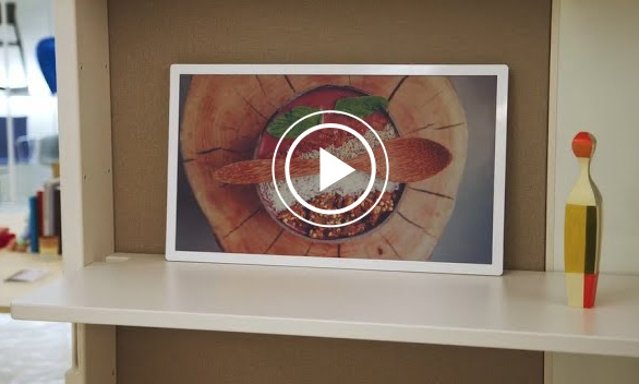Sharp ePaper Display: A new kind of Display that thinks like Paper
When you first see an ePaper display, you might think it’s just a thinner or lower-power LCD. In fact, it’s something completely different. Instead of shining light like an LCD screen, ePaper reflects light, just like real printed paper.
That’s why, when Sharp introduced its new ePaper displays, it transitioned from conventional 4:3 and 16:9 aspect ratios as used in the first generation, to using paper sizes such as A2. These familiar print dimensions remind us that ePaper belongs in the same world as posters and other printed materials.
Martin Lienau explains why we must reframe our thinking about ePaper, outlining the core differences from more familiar LCD technology and its potential as a sustainable, energy-efficient alternative to traditional printed posters.

How ePaper works and why it’s so different from LCD
LCD screens, like those used in monitors, TVs, or digital signage, need a backlight to show an image. The screen is constantly lit from behind, and the picture you see is made by blocking or letting through that light. Even if the image doesn’t change, the screen still uses power to keep that light shining.
ePaper works the opposite way. It reflects light from the environment, just like a printed page. While an LCD may perform better in less bright conditions, ePaper performs better in bright light - you wouldn’t try to read a newspaper in the dark.
Inside an ePaper display are tiny particles that move to form an image. Once those particles are in place, they stay there, even if you unplug the display. Power is only used when the image changes. So if your content stays the same, ePaper uses no power at all.
That’s one of the biggest differences:
- LCD needs constant power to light the display.
- ePaper only needs power when the image changes.
Because of this, ePaper displays offer ground-breaking energy efficiency and, as a new genre of signage technology, presents intriguing potential for the carbon-neutral future of digital signage.
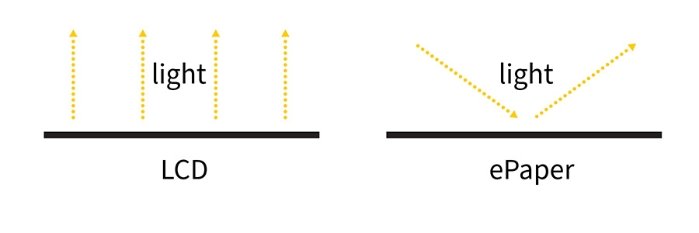
How Sharp engineers ePaper for professional signage applications
Sharp’s ePaper displays use technology from E Ink, as used in e-readers, but Sharp takes it further with its own patented IGZO technology. The result is larger, brighter, and more versatile displays purpose-built for professional environments. Drawing on decades of expertise in colour and image processing from its printer and MFP heritage, Sharp delivers exceptional reliability and visual performance suitable for commercial applications.
One key feature is the integrated System-on-Chip (SoC) inside the display. Rather than needing an external media player or PC, content can be updated easily via USB, Wi-Fi, BlueTooth or through external Content Management Systems (CMS).
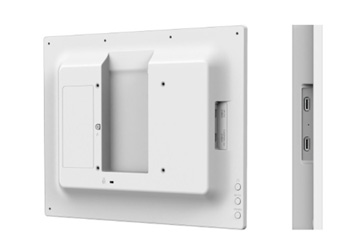
Sharp’s ePaper displays are ultra-thin, lightweight, and adaptable. They can be mounted in portrait, landscape, face-up or face-down orientations, with various mounting points. With the option of connecting a power pack (or using solar power in certain deployments), the installation possibilities are extremely versatile.
With the combination of E Ink’s Spectra 6 film and Sharp’s IGZO backplane and custom colour engine, the Sharp ePaper display achieves faster switching, richer colour, and crisper images compared to standard ePaper solutions.
By wrapping ePaper with a smart engine, installation flexibility, colour capability, and a poster-oriented mindset, Sharp’s ePaper displays are positioned as replacements for printed signs and posters, but with the advantages of updatable digital signage.
Where ePaper fits in the AV World
ePaper is only suitable for static content. You wouldn’t use it for video or animated graphics, but for certain applications it’s perfect, and often better than LCD. If a backlit LCD or LED panel was used to display static content or to replace a poster, you’d be unnecessarily paying for power, and managing brightness, cooling, and maintenance etc. It’s overkill. ePaper, on the other hand, offers the look and ‘always-on’ nature of a poster, but with the flexibility of digital updates and with most of the power and maintenance overhead removed.
ePaper offers some compelling opportunities in AV and signage. Here are a few promising use cases:
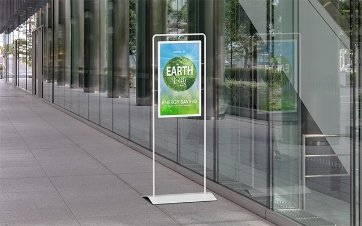
Digital Out-of-Home (DooH) Signage
In shopping malls, transport hubs, and any public spaces where posters, maps, timetables, directory boards, gate numbers, wayfinding, promotional signage or any other static information is required, ePaper displays offer a digital alternative with significantly lower power consumption compared to LCD.

Hospitality and Retail environments
In cafés, restaurants, and retail environments, menus or promotional displays change periodically but often remain static for long durations. The small form factor and versatile installation capabilities of ePaper support digital shelf-edge and header signage to highlight promotions and product categories at the point of sale.
Temporary or remote installations
Because ePaper needs no power to display content and can draw enough power to change content from a simple battery, it becomes attractive for signage in remote, temporary, or hard to cable locations such as outdoor exhibitions, pop-up stores, remote kiosks, outdoor wayfinding or emergency messaging.
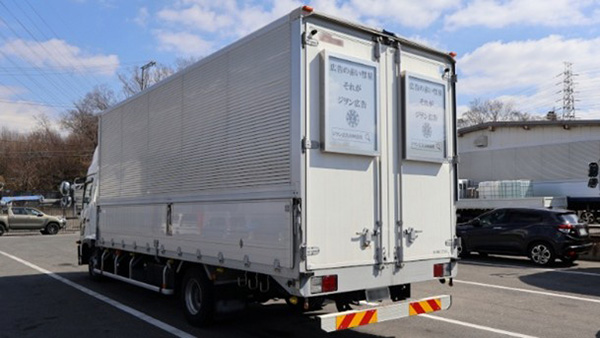
In Japan, a pilot project uses ePaper signage attached to the rear door of delivery trucks. You can read more about this project here

Front-of-house welcome boards
For hotels or business centres, making guests and visitors feel welcomed and valued with personalised signage enriches their experience. Updating content is so simple for staff to administer and the ePaper display can simply be placed on the reception desk or in the conference suite.
Back-of-house status boards
In offices, education campuses or behind the scenes in production facilities, ePaper displays can serve as meeting room status boards, calendar boards, or production dashboards, especially where content updates are periodic and need to be readable but without continuous illumination.

Sharp ePaper is deployed at the University of Hertfordshire to display the risk status in its laboratories.
The key benefits of ePaper
ePaper presents a new way to think about digital content. It’s not a light source, it’s a digital poster. That means:
- No constant power draw.
- No glare.
- Always readable, even in direct sunlight.
- Wide viewing angle
- Long-lasting and low maintenance.
- Ultra-light weight for installation virtually anywhere.
For AV professionals, it opens up a new category between print and digital signage displays combining the flexibility of digital with the simplicity and appearance of paper.
Martin explains more about the benefits and ROI potential of ePaper in this video
A sustainable future
As the AV industry looks for greener, more sustainable solutions, ePaper stands out. Sharp’s use of E Ink technology combined with its own expertise in display engineering means we now have large-format, full-colour ‘digital paper’ that offers long lasting performance with minimal energy use.

It’s not destined to replace digital signage in its traditional use for dynamic messaging, but it could replace any static messaging traditionally displayed in poster form, making it smarter and more sustainable.
With ePaper, Sharp isn’t just making a new type of signage technology, it’s bringing digital life to the world of print.
Currently available in two sizes, the EP-C131 (A5) and EP-C251 (A4), Sharp will soon launch an A2-sized ePaper display with enhanced colour performance, underscoring Sharp’s commitment to advancing a technology with significant potential for sustainable, next-generation signage.
Find out more about the award-winning Sharp ePaper Display.

